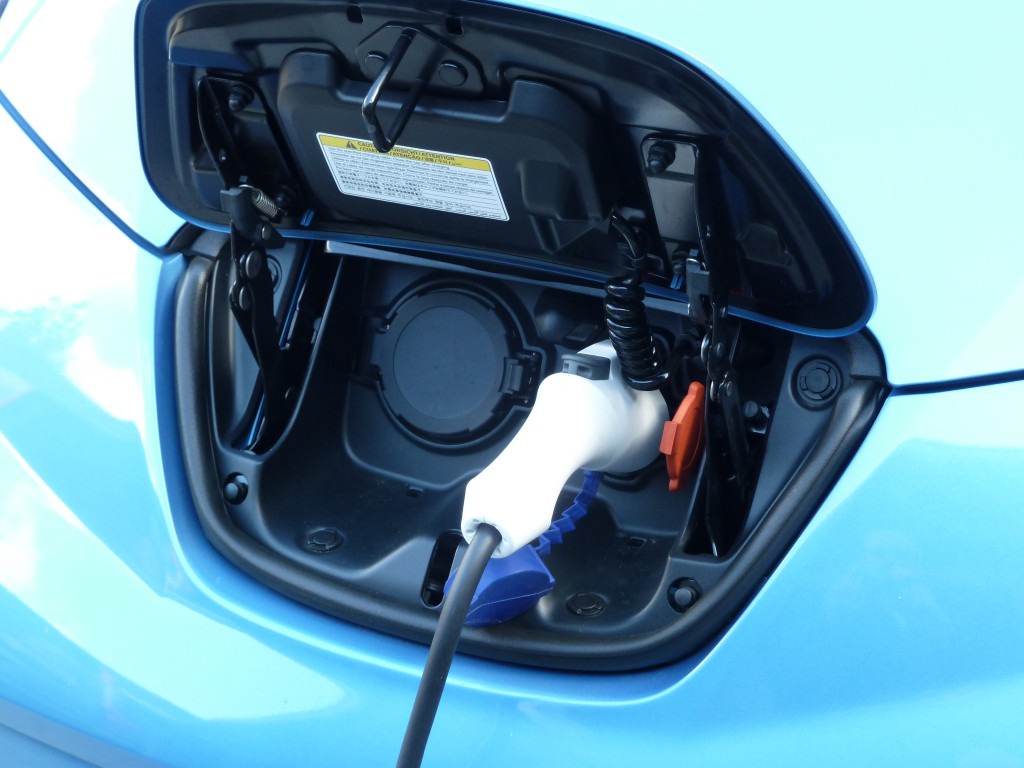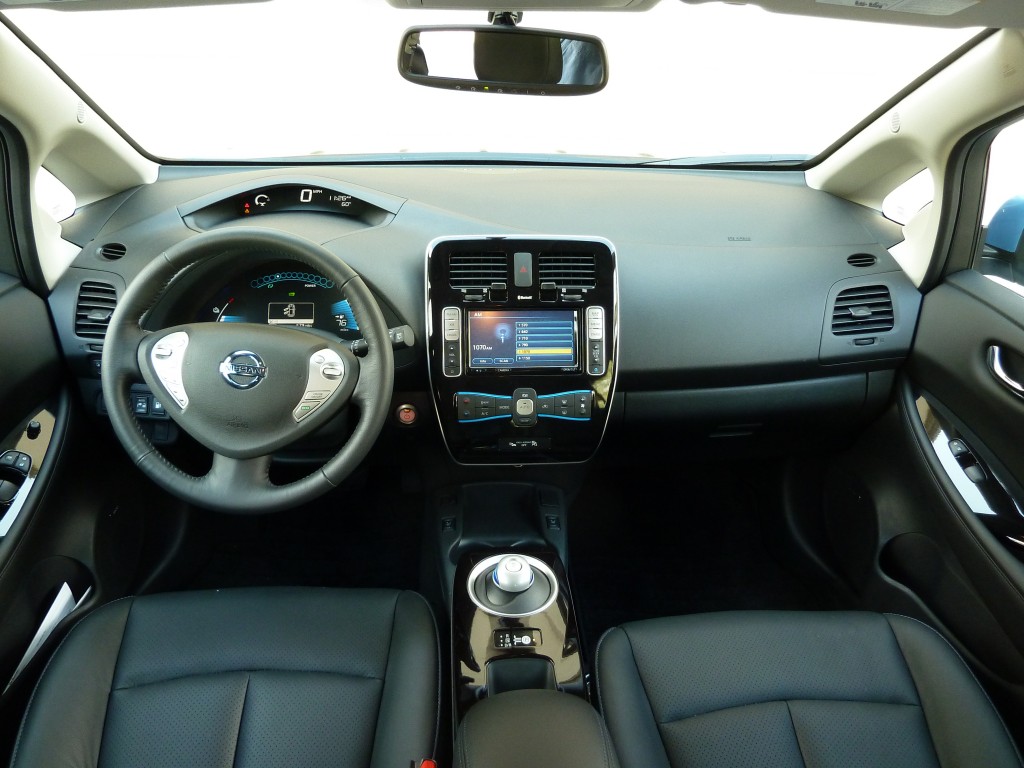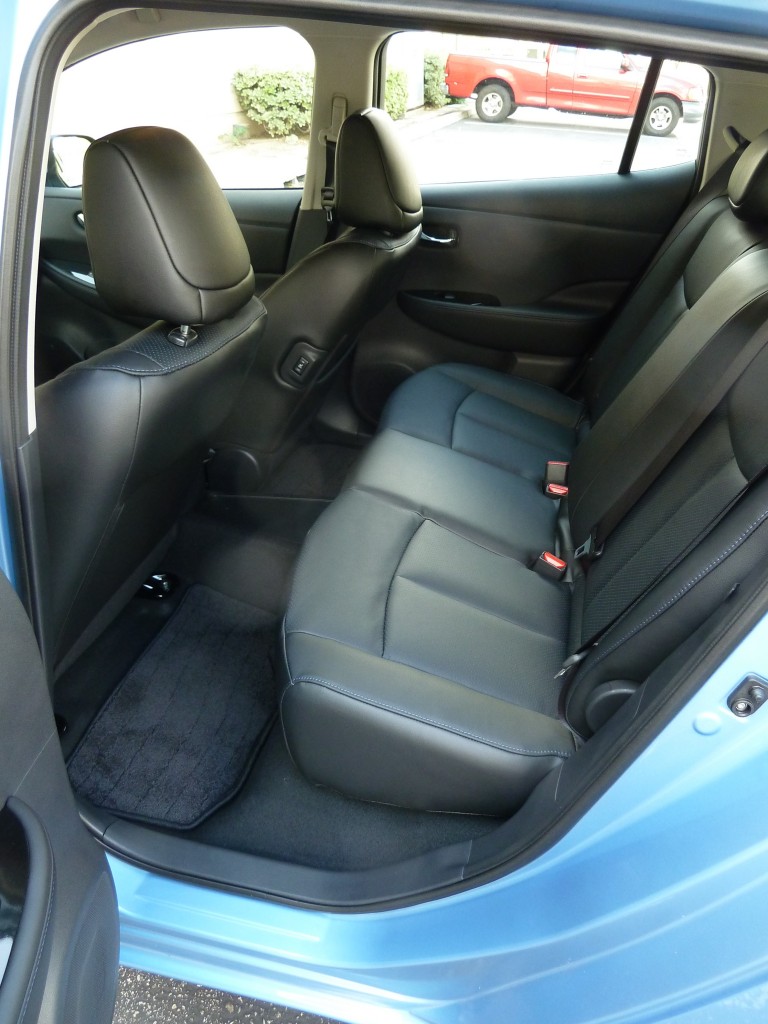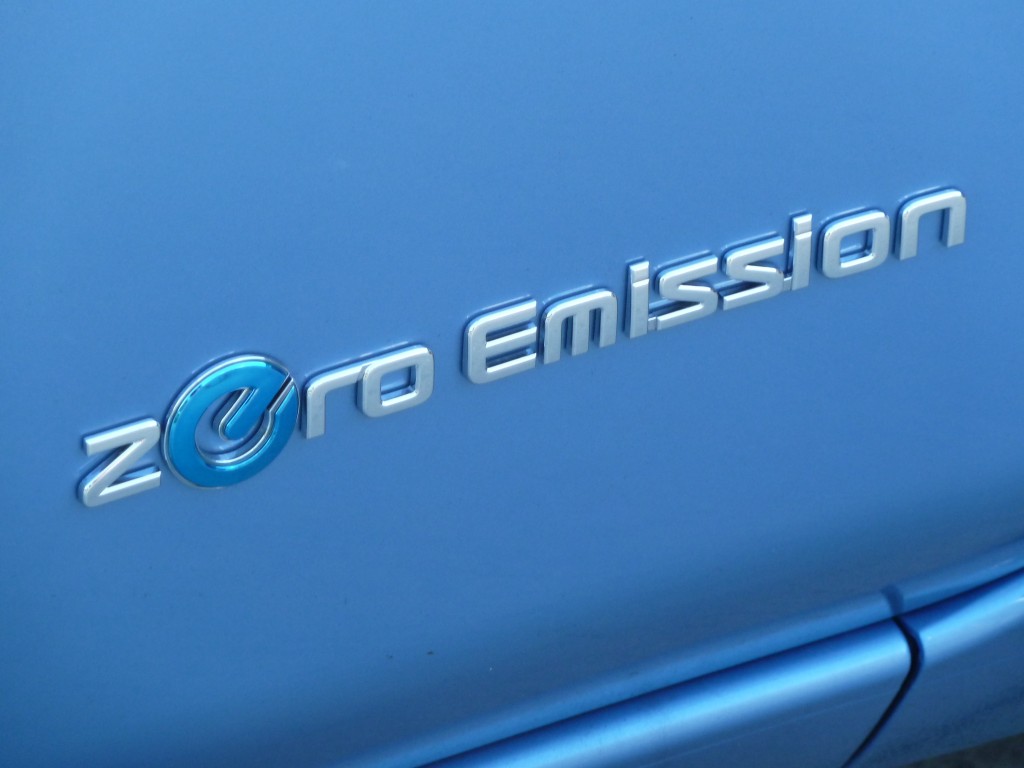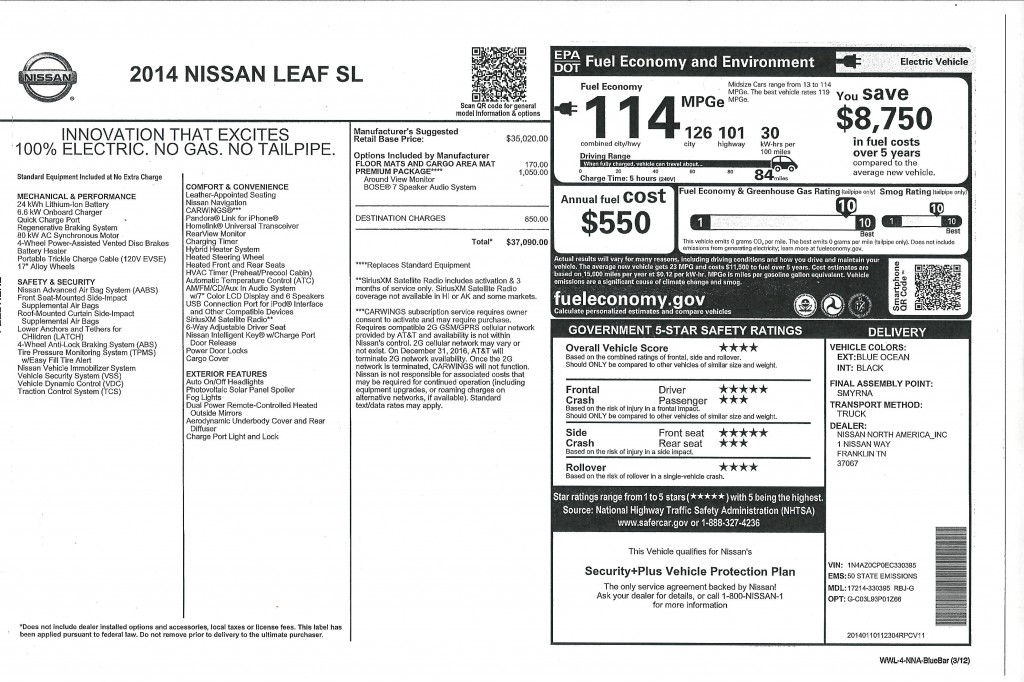I have great interest, and great faith, in the future of the electric car. You may or may not remember that at the birth of the automobile, way early in the last century, electric cars were common. But battery and electric motor technology wasn’t very advanced, and all the electrics were replaced by longer ranged, more efficient, better performing gas fueled automobile. Many carmakers, inventors, engineers, enthusiasts, innovators, and conspiracy theorists have tried to bring back the commercially viable electric car over the ensuing decades. Most of those efforts, up until somewhat recently, have either been losers from the beginning or financial scams, or little more than poor driving science experiments — or all three.
Not any more. Today’s electric cars are real. And they’re real good. I just spent a week in Nissan’s rather fabulous Leaf. No hybrid here, no diesel fuel made from used french fry oil, or any other such thing; The science experiment days are long over. The Leaf is a pure electric, designed and built to be that way from the very beginning and clean sheet of paper (or computer screen). There is no gas engine of any form, and the Leaf relies soley on its own batteries for motive force. Nissan quotes a maximum range of 84 miles from a full charge (more about that in a moment) and there are a handful of ways to juice up the battery pack. The car’s weight, aerodynamics, and packaging have been designed to maximize performance and battery range.
The most common is one of a few different types of home charging.
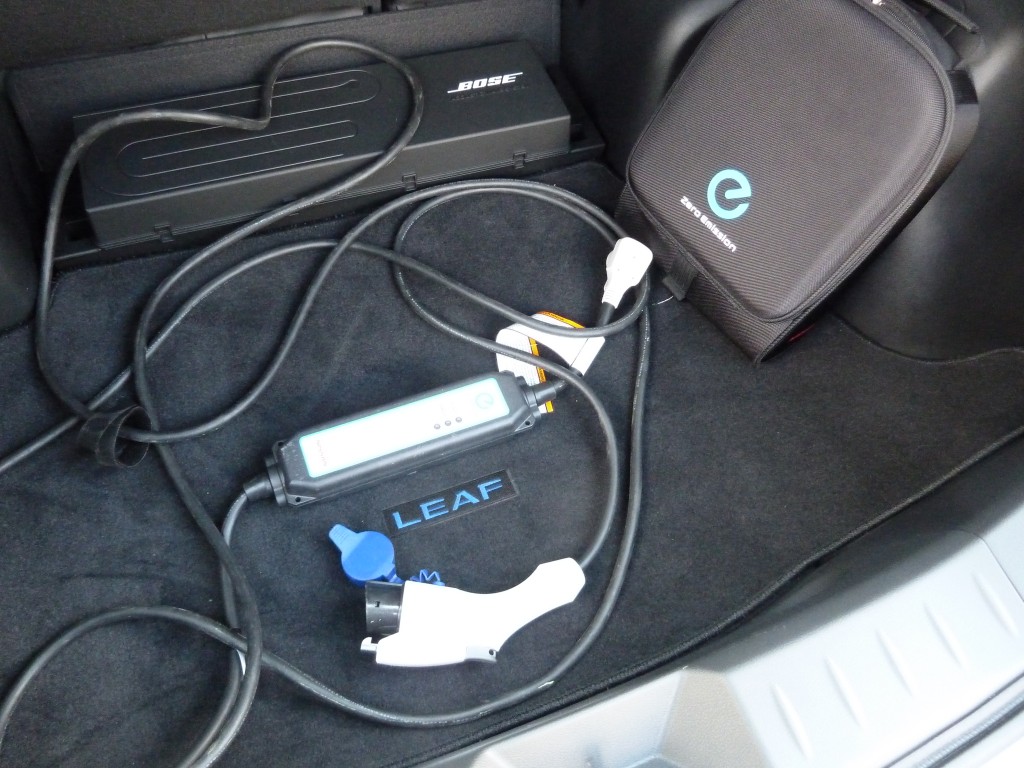
The compact, lightweight 110 Volt charger stores in its own dufflebag in the rear cargo area, and should always be with you, so you can top off your charge at work, motels, anywhere the long cord will reach a household plug.
The car comes with a 110 volt “trickle charger” that’ll charge the car from rock dead to completely full in about ten hours, less if there’s already some juice in the car when you plug it in. Another option is to have a 240 volt charging station installed at your home, office or wherever. 110 is your standard household current that all your stuff runs on. 240 is the heavier duty juice that may power some of your appliances, and your central AC unit. 240 volt charging cuts the charging time in about half. Or there’s public charging, with those pay to play charging stations popping up everywhere.
Pull up, park, plug in your Leaf, and swipe your credit card and buy some juice; most of these are 240V systems to they’ll recharge your car in the time it takes to cruise the mall; in fact many malls have charging stations now. So Park. Shop. Charge.
You can also set up an account with ChargePoint which will provide you with a card reader for use at ChargePoint stations. Handy and easy.
Now you may be thinking than a 80-84 mile range won’t get you very far. I always say “horses for courses.” You don’t show up to run the Kentucky Derby with the largest, heaviest, most muscled black stallion you can find. So, pick the right horse for the right job. Depending upon your household, I’m betting that one or more of you has a daily commute cycle that doesn’t extend beyond the range of the Leaf. Drive to work, make a few stops on the way home, park in your driveway, plug in, recharge; and each charge only costs a couple bucks…never buy gas. Or do an oil change, or replace a radiator hose or a muffler on your leave, because it never needs any of those things.
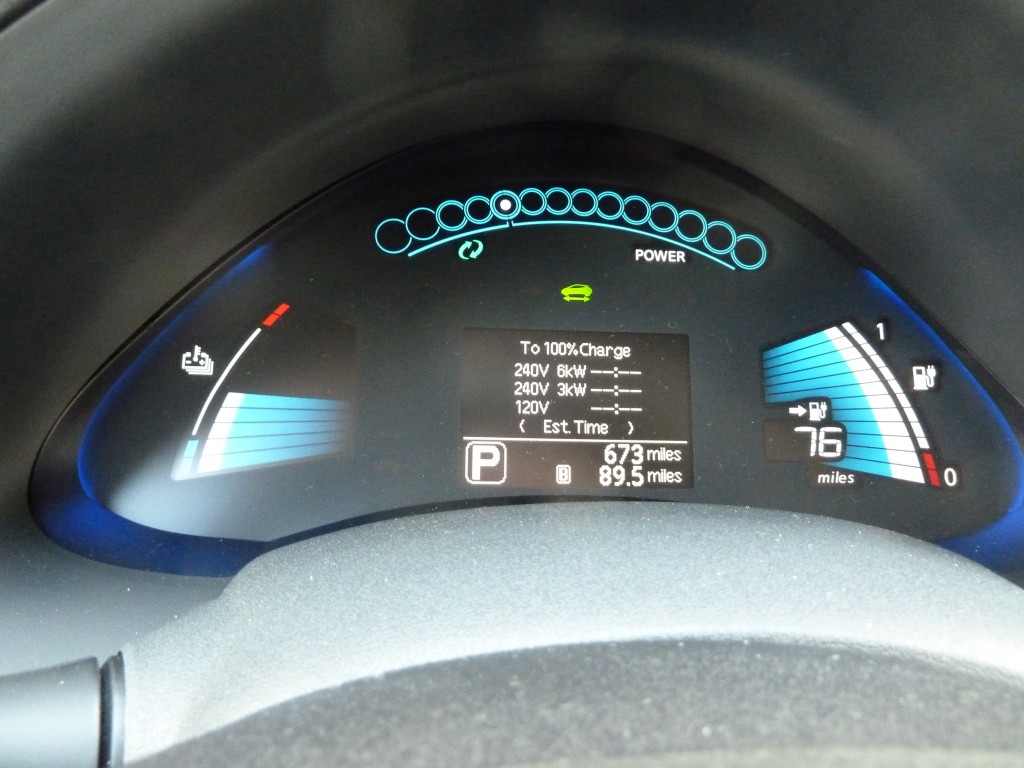
Nissan works hard to mitigate “range anxiety” by always letting you know how much charge you have left and how long it’ll take to recharge depending on the plub and voltage of juice you have at hand; it’s also kind of fun to cruise down a long hill and watch the regen system add miles back to the readouts
The Leaf’s creative and attractive instrumentation always shows you how many miles you have left on the current charge, and how long it’ll take to recharge, depending on how much voltage you have available. And the Leaf has regenerative braking, so as you use the brakes, or coast down a hill, its recharging itself. And not producing one single gram of tailpipe emissions.
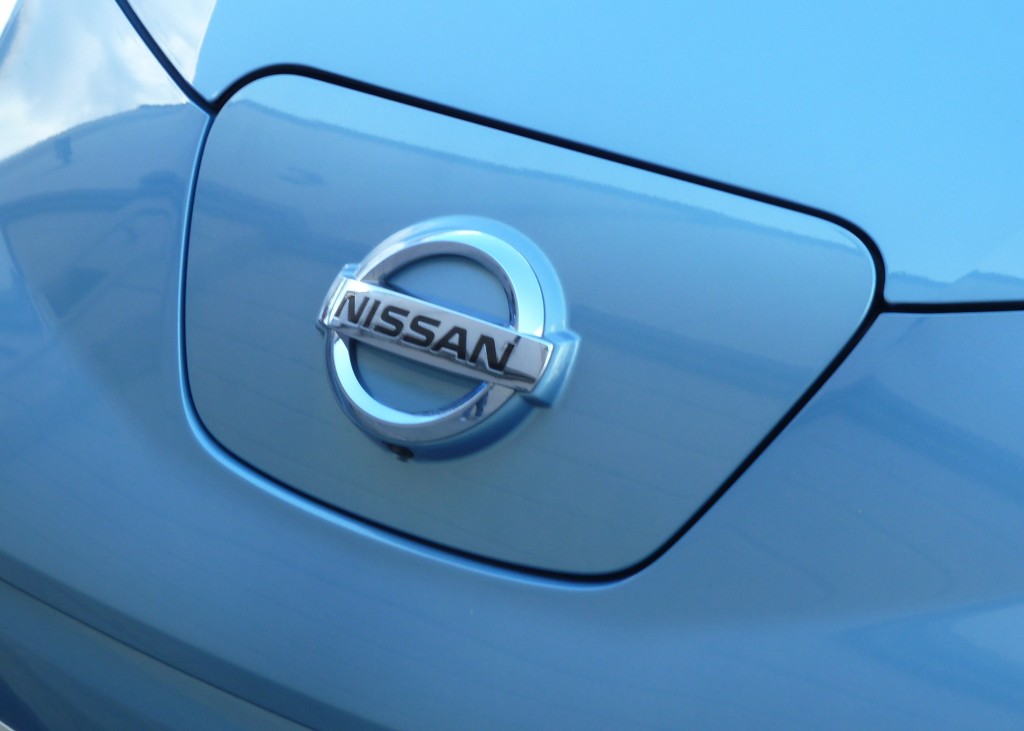
Now you don’t. This little “fuel door” is neatly finished, lighted, and snaps closed to protect the Leaf’s charging port from the elements
And don’t get any foolish notion of the Leaf driving like a high priced golf cart, because it does not. It actually a lot of fun to drive, and very zippy.
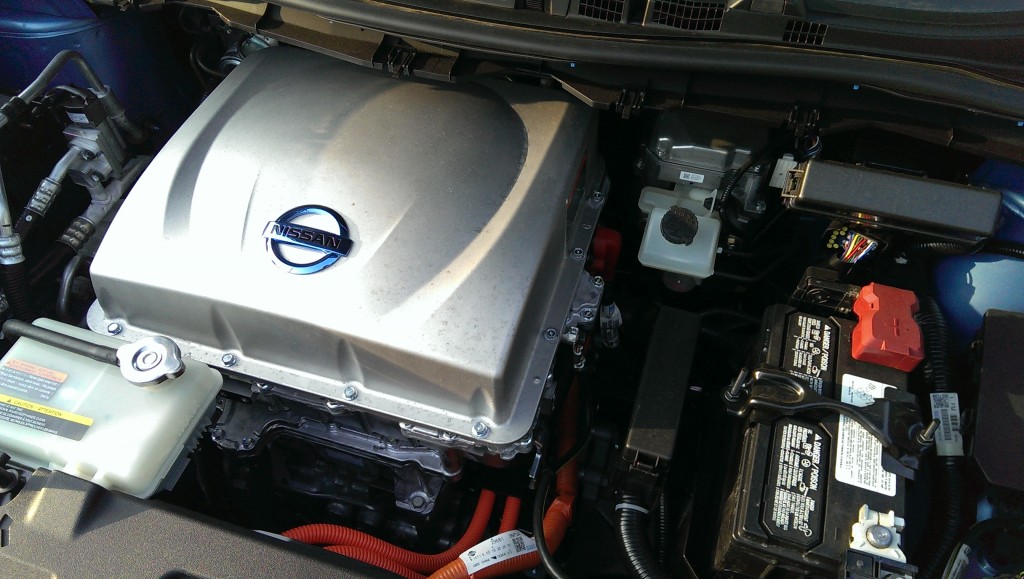
The Leaf’s “engine compartment” is beautifully finished, showing you more “motor” than many of today’s plastic enshrouded gas engines; the conventional battery runs the cars lights, locks, and anti-theft system in the even the main driving battery pack is dead
Remember that electric motors produce their maximum torque at zero rpm, so the off the line punch is impressive. And there’s no gears or transmission, so the power just keep on pulling. It’ll quirt you safely through any intersection, and pull freeway on ramps with punch. The throttle feels like any normal “gas pedal” and the electric brakes have plenty of stopping power, plus ABS, traction and stability control and all that safety stuff, including lots of airbags and tire pressure monitoring. Yes, its a real car.
It handles well, rides nicely, and is packed full of luxury, convenience, and techno features. Needless to say, driving a Leaf across America would be an adventure requiring some planning, but it would certainly be in expensive and emissions free.
Nissan and the EPA estimate your average energy cost to be about $550 per year, saving you nearly nine grand in gas costs to cover the same ground in a similarly sized economy car.
And a word about the Leaf’s packaging too; the car’s really light, but well insulated enough to be very quiet. There’s adequate head and legroom for real adults, and while you may or may not like its googly eyed lunar breadloaf styling, most agree that its at least cute or endearing, if not handsome in the most classic sense. Check out the window sticker just below; at $37,090 out the door, its a bargain if driving green is important to you, and if it meets the needs of your driving duty cycle; the cost could be less depending upon tax rebates or other incentives available at your time of purchase. There are thoughtful touches and smart engineering everywhere you turn; the front charging port is lighted, and the Leaf emits a not too loud but loud enough electronic beacon noise when you shift into reverse, so pedestrians and animals, that of course won’t here any engine running will you know might be reversing into their path.
There’s a ton of technology and innovation packed into this car for that amount of money, and you’ll feel good not sending tons of money to OPEC oil gods that you may or may not be politically or physically aligned with, and you’ll sure save a ton of dough on gas.
I’m digging it.




